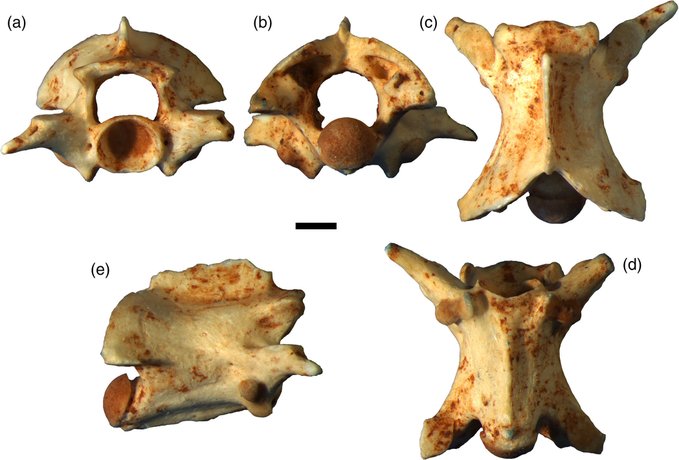
A Greek researcher recently identified a prehistoric snake that migrated from Africa to Europe 5.5 million years ago and officially named it “Odysseus.”
Greek paleontologist Dr. Georgios Georgalis has given this new species of snake the name of Homer’s hero to commemorate the serpent’s long journey that originated from Africa and Asia.
The discovery was made by Georgalis while studying fossils from the late Miocene (MN 13) period from excavations in Salobreña, southern Spain which are located at the Museum of Natural Sciences in Madrid.
The study of the fossils was for the Institute of Systematics and Evolution of Animals of the Polish Academy of Sciences (PAN) in Krakow, Poland.
The Greek scientist, who was studying the vertebrae of a prehistoric snake that had not yet been identified, came to his surprising conclusion about its origin.
“In honor of the legendary Odysseus”
The Greek scientist said that the study included abundant new prehistoric snake material from the late Miocene found in Salobreña, Spain.
“I named the new species Psammophis odysseus in honor of the legendary Odysseus. This is the first and only appearance of this genus in Europe,” Georgalis told the Athens- Macedonian News Agency (AMNA).
What makes the Greek paleontologist’s research more interesting is the age of the newly discovered species, as it lived about 5.5 million years ago, exactly at the time of the so-called “Messinian Salinity Crisis.”
Also known as the “Messinian event,” this was a geological event during which the Mediterranean Sea went into a cycle of partial or nearly complete desiccation throughout the latter part of the Messinian age of the Miocene epoch, 5.96 to 5.33 million years ago.
It ended with the Zanclean flood, when the Atlantic reclaimed the basin.
As the Greek scientist explains, “The Strait of Gibraltar closed, and the Mediterranean dried up a great deal, so many places that were sea now looked like a desert.
“This phenomenon had a huge impact on the environment of southern Europe and northern Africa as many land animals migrated from Africa to Europe and vice versa.”
Description of the Psammophis odysseus
The new species of the prehistoric snake has differences in some protuberances and formations of its vertebrae but is similar in size to the modern genus, which reaches one meter (3.28 feet).
“Its location shows another class of animals that managed to go from Africa to Europe at that time but failed to survive after the end of the Messinian Salinity Crisis,” the researcher said.
Dr. Georgios Georgalis
According to the abstract of the published study, “the two psammophiid genera Psammophis and Malpolon appear almost simultaneously in the European fossil record (MN 13).
“The former achieving only a short-lived and apparently geographically limited distribution in the continent, while the latter still exists in its modern herpetofauna.”
The new find suggests a direct dispersal event from northwestern Africa to the Iberian Peninsula during the late Miocene, facilitated by the Messinian Salinity Crisis.
Georgalis, along with colleague Zbigniew Szyndlar, recently published his findings in the scientific paper titled “First occurrence of Psammophis (Serpentes) from Europe witnesses another Messinian herpetofaunal dispersal from Africa – biogeographic implications and a discussion of the vertebral morphology of psammophiid snakes,” in The Anatomical Record.
In 2019, Dr. Georgios Georgalis had identified two other new species of prehistoric snakes, aged about 6 to 5.5 million years from the area of Serres in Greece, giving them the names “Periergophis micros” and “Paraxenophis spanios.”
The Greek scientist has 82 publications, mostly studies of prehistoric fossils.
See all the latest news from Greece and the world at Greekreporter.com. Contact our newsroom to report an update or send your story, photos and videos. Follow GR on Google News and subscribe here to our daily email!



